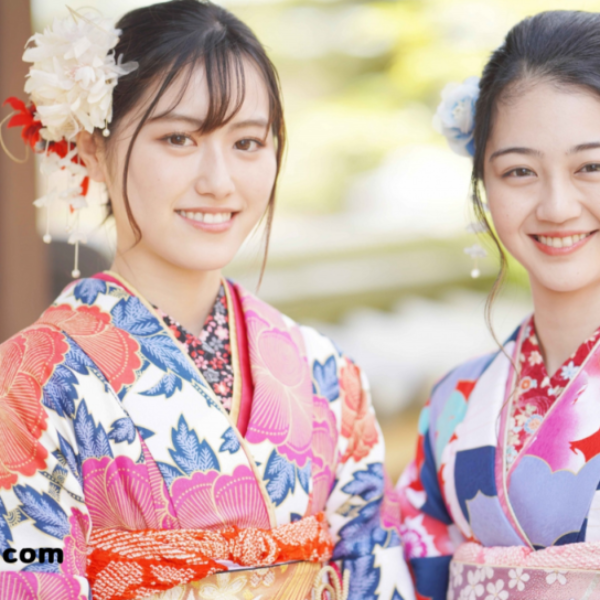Japanese Fashion Styles: A Comprehensive Guide
Japanese fashion has always attracted attention and is widely famous for the combination between the classic and modern trends. From the elegant patterns of clothing called kimono to the modern and distinct looks of Harajuku, Japan’s impact lies in fashion. In this article, we will guide you through the various Japanese fashion styles, exploring their histories, features, and current reflections.
Traditional Japanese Fashion Styles
Kimono: The kimono is considered one of the most representative garments in Japan and an essential piece of their culture. Although both men and women can wear this attire, its unique characteristics include wide sleeves, elaborate patterns, and a long obi. People wear this silk garment at important events such as weddings, tea ceremonies, and festivals.
Yukata: Yukata is also known as summer kimono which is lighter in weight and worn loosely and is usually made of cotton fabric. It is especially worn in summer mainly during festivals and when visiting onsen or hot springs. For those wanting to try traditional Japanese clothing, the yukata is easy to put on and doesn’t have as elaborate a pattern as kimono.
Originally: Samurai wore the hakama, a type of clothing that resembles a pleated skirt below the knees and is commonly paired with a kimono. Today, people use it in graduation ceremonies and martial arts performances. Hakama has a formal approach to its construction and appearance and looks rather official and elegant.
Contemporary Japanese Fashion Styles
Harajuku: Fashion in Japan embraces youth culture with dramatic, ornate, wild, and free stylesBright colors and patterns dominate, and people use accessories without hesitation. Originating from the youth culture of the Harajuku district in Tokyo, this is a form of fashion that allows one to express any form of creativity. Substyles include:
- Lolita: A substyle borrowed from Victorian and Rococo references as protagonists wearing frilly dresses, petticoats, and lace.
- Gothic: It is a mix of Gothic style and Japanese manga with a focus on dark colours, crosses, and dramatic makeup.
- Decora: Characteristic for its cheerful and colourful trinkets, decora fashion is about layering, so individuals may pin several hair claws, bracelets and necklaces at a time.
Gyaru: Gyaru is a beautiful and defiant fashion trend that began in the 1970’s among young women. This look features white hair, face drawings, and bronze skin. The style has several substyles such as The Hime Gyaru which is a more stunning princess-kind of gyaru and the Ganguro which over-emphasizes the bronze skin and black makeup.
Visual Kei: Visual Kei connects closely with punk, gothic, and glam metal styles in both fashion and music. Emerging from the Japanese rock scene, Visual Kei involves musicians that wear makeup, styled hair and androgynous clothing. Japanese music bands X Japan and Malice Mizer originated it and modern post-punk/goth fashion further popularized it.
Mori Kei: This specific trend, known as Mori Kei or ‘Forest Style,’ draws inspiration from the beauty of nature. Flynn’s clothing style features relaxed, layered fabrics in well-suited colors, often with a retro or homemade appearance.The style embraces looseness and simplicity, using natural fabrics such as wool, cotton, and linen as much as possible.
Modern Influences and Global Impact
Japanese: Contemporary designers who have greatly contributed to international fashion include Yohji Yamamoto, Rei Kawakubo of Comme des Garçons and Issey Miyake.Their clothing ideas are rather daring and radical, and they sometimes create clothes that can be categorized as artworks. Many of these designers have been pivotal to the exportation of Japanese fashion to the global marketplace.
Street: Japanese Street Style and Trends Japanese street fashion has therefore played a big part in directing trends in the fashion industry. Japan’s avant-garde street fashion is an influential aesthetic that has paved the way for current trends elsewhere. Even brands not traditionally associated with high fashion, like Uniqlo, have played a key role in bringing Japanese fashion trends to mainstream markets.
Conclusion
Also, Japanese fashion is a unique and rapidly developing sphere that combines the continuity of the culture and the spirit of the experiments. Whether you prefer traditional Japanese apparel, modern images like kimonos, or street style such as the Harajuku movement, you will now find something to suit your taste in Japanese fashion. Japan will likely continue to lead the global fashion scene and set new trends in the future.
